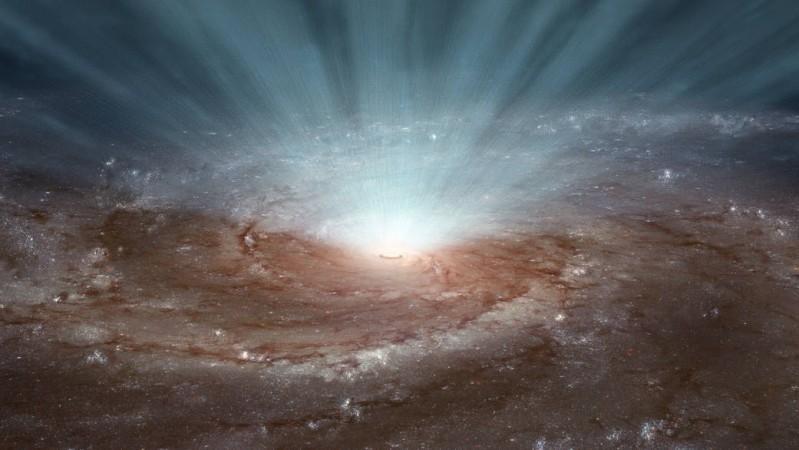
Black holes devour stars but the process is far more violent and unwieldy to imagine, say startled scientists who just deciphered the highly destructive phenomenon happening in the universe.
Researchers have long been aware of the fact that when black hole consumes a star, bright flares of radiation will be witnessed and the process is known as tidal disruption event (TDE). But now they are aghast when tiny details of the violent end of a star are revealed by scientists, which is entirely different from other galactic phenomena.
Even light cannot get out of a black hole in space as the gravitational pull is so much and matter gets squeezed into a tiny space. Nasa says this is how a star dies. But the new study was able to distinguish TDEs from other galactic phenomena.
Jane Lixin Dai, a physicist with the Niels Bohr Institute's Dark Cosmology Center, and the one who led the study explained that the tidal disruption events are very rare in a typical galaxy.
Supermassive black holes in most galaxies do not actively consume any material and thus do not emit light. This characteristic is clearly distinguishable from galaxies that have Active Galactic Nuclei (AGNs), they said.
"It is interesting to see how materials get their way into the black hole under such extreme conditions. As the black hole is eating the stellar gas, a vast amount of radiation is emitted. The radiation is what we can observe, and using it we can understand the physics and calculate the black hole properties. This makes it extremely interesting to go hunting for tidal disruption events," said Dai.
Astronomers have also said that though the physics behind TDEs is the same, they can be categorized in few distinct classes – Some of them emit mostly x-rays, while others make ultraviolet lights visible.
Dai and her colleagues, who joined from University of Maryland's Joint Space-Science Institute and the University of California Santa Cruz (UCSC) came up with a coherent model, by combining elements from general relativity, magnetic fields, radiation, and gas hydrodynamics, to understand the TDEs, using computational tools.
The team concluded that observation can differ depending on the angle the event is being observed."It is like there is a veil that covers part of a beast. From some angles we see an exposed beast, but from other angles we see a covered beast. The beast is the same, but our perceptions are different,' said Enrico Ramirez-Ruiz , a co-author of the paper.
The study has been published in the Astrophysical Journal Letters titled, "A Unified Model for Tidal Disruption Events".














